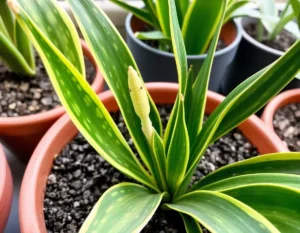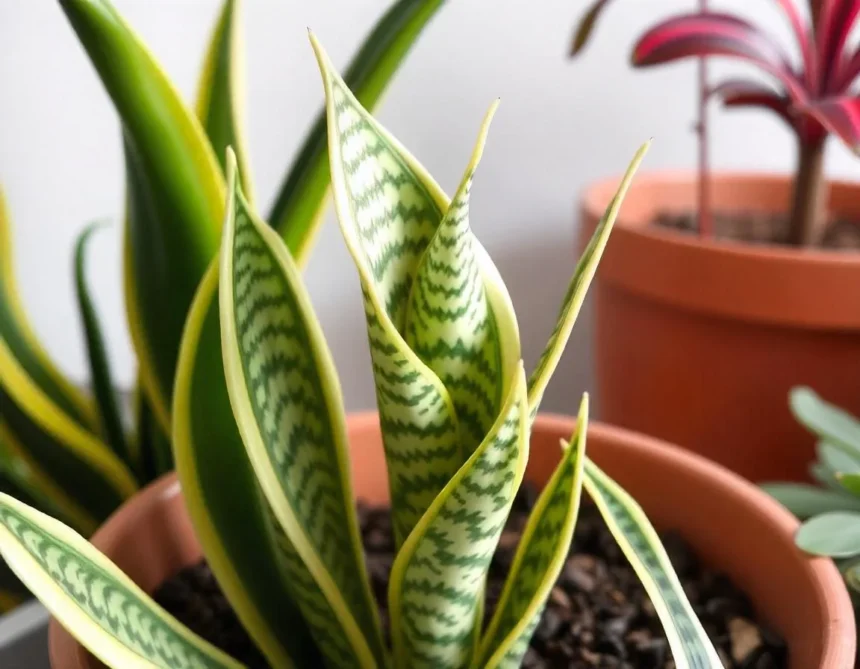Say Goodbye to Stunted Snake Plants – Proven Tips for a Lush, Bushy Indoor Jungle
Introduction: The Snake Plant War
I bet you have a snake plant in the corner of your room, just waiting to sprout but hasn’t budged an inch in the past year. It’s annoying, isn’t it? Trust me, you’re not alone. Many plant owners have been in the same situation: dreaming of lush, bushy snake plants, but never getting the growth they’re hoping for.
Not long ago, my snake plant was sitting in a dark corner, looking pretty sad. After some trial and error, I realized that I was unintentionally stunting its growth. I made a few adjustments, and boom! My snake plant started thriving. Stick with me, and I’ll share some tips on how to turn your snake plant into a wonder in your indoor garden.
Getting to know the snake plant: Sansevieria
Introduction and Origins
The snake plant, also known as Sansevieria or mother-in-law’s tongue , is native to the tropical savannahs of West Africa, specifically Nigeria. Its tall, upright, sword-shaped leaves make it one of the hardiest houseplants. Often referred to as “indestructible,” this plant can withstand the harshest indoor conditions. However, misconceptions about how to care for it abound.
The famous myth of “low light”
 One of the biggest myths about snake plants is that they thrive in low light. While they can survive in low light, they won’t grow or thrive. If your snake plant has droopy, thin leaves and isn’t growing, it probably needs more light. Mimicking its natural environment, where it gets plenty of sunlight, is key to encouraging healthy growth.
One of the biggest myths about snake plants is that they thrive in low light. While they can survive in low light, they won’t grow or thrive. If your snake plant has droopy, thin leaves and isn’t growing, it probably needs more light. Mimicking its natural environment, where it gets plenty of sunlight, is key to encouraging healthy growth.
Lighting Snake Plants: The Truth
Why Snake Plants Can’t Survive in Low Light
It’s true, snake plants can survive in low light. However, that doesn’t mean they’ll thrive. In fact, low light stunts their growth to almost nothing. If you want a plant that’s more than just decorative, a little sunlight will do wonders for your snake plant.
Choosing the Right Location
The best location for your snake plant is a spot with indirect sunlight or a spot that receives direct sunlight for part of the day. You may have heard that direct sunlight can burn your snake plant’s leaves, but that’s only half the truth. If you gradually acclimate your plant to sunlight, it will not only survive but thrive in more direct light. My snake plant sits near a south-facing window, getting about six hours of direct sunlight each day.
How to Water Your Snake Plant: Avoid Its #1 Killer
Overwatering or underwatering
is the number one cause of snake plant death. It’s not about how much water you give at one time, but how often you water them. Snake plants hate soggy soil, which leads to root rot. Interestingly, they tolerate lack of water much better. In short, it’s better to water them underwater than to overwater them.
Finding the Perfect Watering Schedule
To avoid overwatering, make sure the soil is completely dry between waterings. Depending on the humidity and temperature in your home, you may need to water your snake plant every two to three weeks. Not sure if it’s time to water? Stick your finger into the soil about 2 inches deep. If it feels dry, it’s time for a drink.
Flooring Secrets: Creating the Perfect Mood
Importance of Well-Drained Soil
Although snake plants do not develop deep root systems, they still need well-drained soil to thrive. Standard potting soil retains too much moisture, which can be disastrous for your plant. The key is to create a soil mix that allows excess water to drain freely.
Best Potting Mixes for Snake Plants
For best results, choose a cactus or succulent potting mix that is formulated for fast drainage. If you’re feeling creative, you can make your own by mixing regular potting soil with perlite and bark. The goal is to give the roots plenty of room to breathe, preventing them from sitting in waterlogged soil.
Fertilizing Snake Plants for Optimal Growth
When and How to Feed Your Snake Plant
Snake plants aren’t big feeders, but they do appreciate a little feeding, especially during the growing season in spring and summer. A general-purpose houseplant fertilizer every couple of months should be sufficient. Be careful not to overdo it: too much fertilizer can burn the roots and damage your plant.
Snake plants are low-maintenance, but don’t forget about proper repotting! Learn how in our guide on repotting and propagating snake plants.
Benefits of Organic Fertilizers
If you prefer a more natural approach, try organic fertilizers like fish emulsion or worm castings. These nutrient-dense options offer slow-release benefits that your snake plant will love. Pro tip: If you have an aquarium, use the water from your water changes to fertilize your plants—it’s packed with nutrients!








